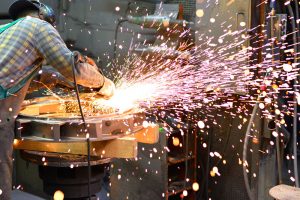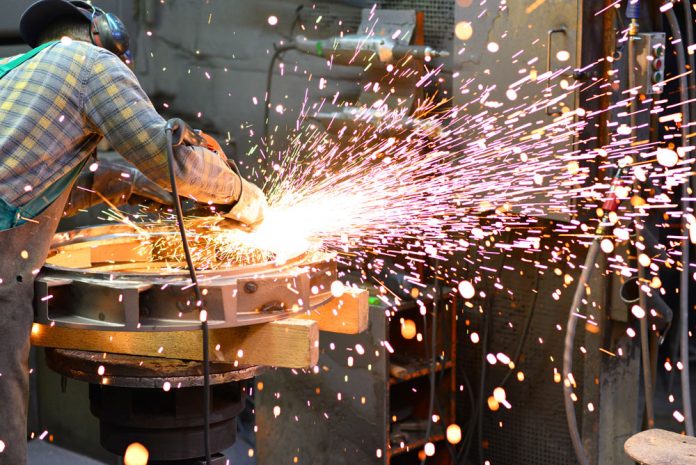By Emily Eckart
Manufacturing jobs, like jobs in many industries, were hard hit by the COVID-19 pandemic. As the economy recovers and jobs return, the industry is coming to terms with a changed world that presents new challenges and opportunities.
“I don’t see a return to the normal way we were pre-COVID,” says Don Klepper-Smith, chief economist and director of Research of DataCore Partners LLC. “Thinking of post-COVID—and a post-COVID environment—there is a new normal that is coming to the fore.”
During the pandemic, “as with every industry, manufacturing jobs declined,” says Patrick Flaherty, director of Research at the Connecticut Department of Labor. “They were not, on a percentage basis, the largest decliner in the country or in the [state]. Other industries, such as restaurants, suffered much larger losses.
“But we did see a decrease in manufacturing employment that was significant and that has still not fully recovered, either nationally or here in the state.”
There is good news: Unlike the economic damage caused by the 2008-09 Great Recession, which was followed by years of slow recovery, manufacturing jobs have returned more quickly during the pandemic.
Flaherty points out that COVID-19 vaccinations have been beneficial not only to public health but also to the greater economy.
“As we see vaccination rates increasing, in those places where vaccination rates are high, we’ve seen the economy come right back,” he says.
Smith forecasts that manufacturing is going to gear up to the degree of consumer demand.
“That is why consumers are so key,” says Smith. “What are consumers going to be demanding in terms of consumer durables? Are they going to spend more time cocooning at home? Are they going to be traveling? Are they going to have the disposable income to drive that growth?”
Looking ahead, Flaherty notes, “The Bureau of Labor Statistics has projections for decline in manufacturing employment over the next ten years.”
However the picture is more nuanced than a simple decline.
The manufacturing industry is diverse with many different kinds of jobs. Smith gives an example of how manufacturing has changed over the decades in Connecticut. “In 1969, there were 470,000 manufacturing jobs in Connecticut, and right now, there are about 152,000,” he says. “But that doesn’t tell the whole story. It’s not only jobs—it’s the fact that productivity in the manufacturing sector has been stellar.”
In terms of gross state product or gross domestic product, the value added per manufacturing in Connecticut is one of the highest of all states.
At a larger scale, Smith says, “We’ve seen the national economy transition from traditional manufacturing towards trade and services and now information technology and so forth.”
He believes manufacturing is still crucial to national economic growth.
“We can’t ignore the importance of manufacturing,” says Smith. “Manufacturing is still an integral and important part of the US and Connecticut economies.”
In a 2011 report co-authored by Smith, “Connecticut Manufacturing: Building on the Past, Creating our Future,” researchers found the manufacturing sector both created and amplified other economic activity in the state.
For every dollar’s worth of manufactured goods created, there was another $1.35 worth of activity in other economic sectors. This “multiplier effect” was twice that of most of the services sector.
Furthermore, Smith says, “For every job you create in manufacturing, there are another one-and-a-half jobs created elsewhere in the economy.”
While it has been ten years since the release of the report, Smith says, “If anything, the multipliers have gotten even stronger since those statistics were recorded.”
Smith explains that jobs are going to be created where there are two “P’s.” “The economy is driven by productivity and profitability,” he says. “In terms of ‘profitability,’ the cost of business factors significantly in whether or not a state can increase its manufacturing workforce.
Smith cites a Moody’s report that found 40 percent of a state’s long-term job growth is a function of the cost of doing business. This give an advantage to business-friendly states like North Carolina, South Carolina, Florida, and Georgia, which are attracting new manufacturing jobs, sometimes from companies looking to move out of the more expensive northeast region.
For productivity, a skilled workforce is key.
Even as jobs shift toward lower-cost areas, companies need workers who have the requisite skills and knowledge. Smith emphasizes the importance of STEM—science, technology, engineering, and math: “To the degree that we can see educational programs, not only at the college level but also at high school level and even going into grade school, that prepare people for advanced engineering, technology, and math,” he says, “that speaks to economic competitiveness.”

Meanwhile one of the challenges is not just creating jobs but finding workers to fill existing vacancies.
A recent Deloitte report, “Creating Pathways for Tomorrow’s Workforce Today: Beyond Reskilling in Manufacturing,” found that of the approximately 1.4 million manufacturing jobs lost across the U.S. during the pandemic, 820,000 workers were hired back by the end of 2020. A remaining 570,000 jobs have not returned—and of those, 500,000 are job openings. These openings are for both entry-level and skilled workers.
In a survey of U.S. manufacturing executives, 36 percent said it was harder to find talent now than it was in 2018. Based on these trends, the report predicts, “Manufacturers could leave up to 2.1 million jobs unfilled between 2020 and 2030, impacting everything from productivity to innovation and competitiveness to GDP.”
One reason is an aging workforce. Flaherty says, “The biggest problem right now for manufacturing in Connecticut is the replacement of retirees.”
In Connecticut, the manufacturing workforce skews older than the average worker, with many more workers close to retirement.
The Deloitte report notes similar trends nationally, citing a lack of interest in manufacturing jobs among younger generations as part of the reason why new workers are not coming in.
Additionally, Flaherty says, the career trajectory of new manufacturing workers has suffered the lingering effects of the Great Recession.
“Employers would like to hire people with experience. The problem is if they weren’t really hiring ten or fifteen years ago, there is no one out there with ten or fifteen years of experience,” says Flaherty. “So when they see their employees who have thirty or more years of experience retire, they are sometimes hesitant to hire somebody with no experience at all. But the reality is that is who is out there, because of the Great Recession.”
In the period following the financial collapse, businesses weren’t hiring—so people entering the workforce during that time didn’t start acquiring the experience employers hope to see.
According to Flaherty, “There will have to be an adjustment on both sides. Employers are going to have to adjust their expectations. And we’re going to have to do our job in workforce development to skill up some of the folks to get them ready to take these jobs.”
Training programs can attract workers and prepare them for specialized jobs, and regional programs centered around specific manufacturing segments could go a long way toward developing the skilled new workers employers need.











